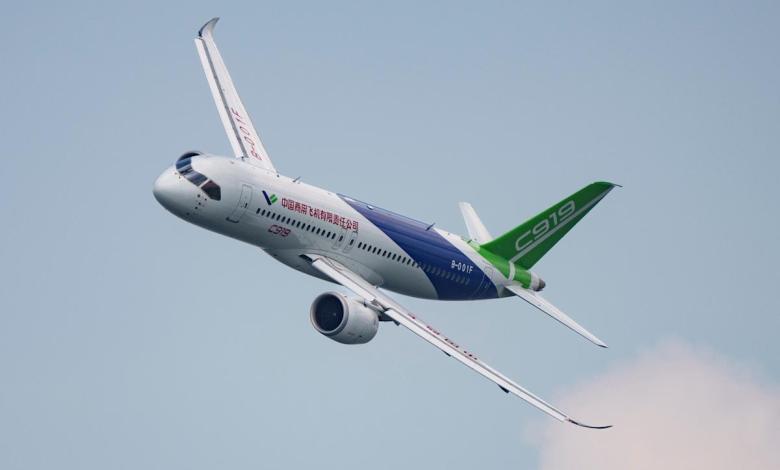Amid US-China trade tensions, China’s C919 aircraft faces turbulent skies

HONG KONG (AP) — China’s ambitions to challenge Boeing and Airbus with its own passenger jets are in turmoil, with deliveries of finished planes likely to fall far short of targets announced this year.
The C919 jet is a single-aisle passenger aircraft designed to compete with the Boeing 737 and Airbus A320 and is built by state-owned aircraft manufacturer COMAC. Beijing presents it as evidence of China’s technological progress and self-reliance, even though it uses many components of Western origin.
The trade friction with Washington could prevent COMAC from obtaining core components of the project, which is backed by huge subsidies from the Chinese government.
“COMAC faces significant risks from an unstable policy environment, with its supply chain vulnerable to export restrictions and tit-for-tat measures between China and the United States,” said Max J. Zenglein, senior Asia-Pacific economist at the Conference Board think tank.
According to analysts at Bank of America, C919 has 48 major suppliers from the United States, including General Electric, Honeywell and Collins, 26 from Europe, and 14 from China. Trump has threatened to impose new export controls on “critical” software from China after Beijing imposed tighter export controls on rare earths.
“Existing bottlenecks are being exploited in the transaction process between governments,” Zengerlein said. “This is likely to continue as key dependencies have become political bargaining chips.”
Beijing has high hopes for the C919, which will make its first commercial flight in 2023. The midsize jet is designed to help meet the huge domestic demand for new aircraft over the coming decades. China hopes to expand sales beyond its borders and fly to the world, including Southeast Asia, Africa and Europe.
COMAC delivered 13 C919s to Chinese airlines last year and only seven as of October this year, despite plans to increase production and deliver 30 aircraft in 2025, according to aviation consultancy Cirium.
China’s largest state-owned airlines – Air China, China Eastern and China Southern – are the only commercial airlines currently operating a total of about 20 C919s.
Dan Taylor, director of consulting at aviation consultancy IBA, said trade tensions between China and the United States have “directly impacted” the C919 delivery schedule. He said that first, the United States suspended the export license for the aircraft’s LEAP-1C engine around May and resumed exports in July, causing production plans to be disrupted.
Taylor said that the technology of the US-controlled LEAP-1C engine (co-manufactured by General Electric Aerospace of the United States and France’s Safran Group) requires an export license, which means that the C919’s engine requires an export license from the United States, which makes it “inherently sensitive to political changes.”



